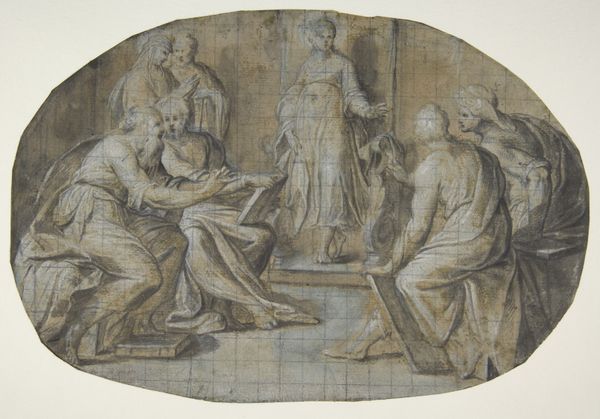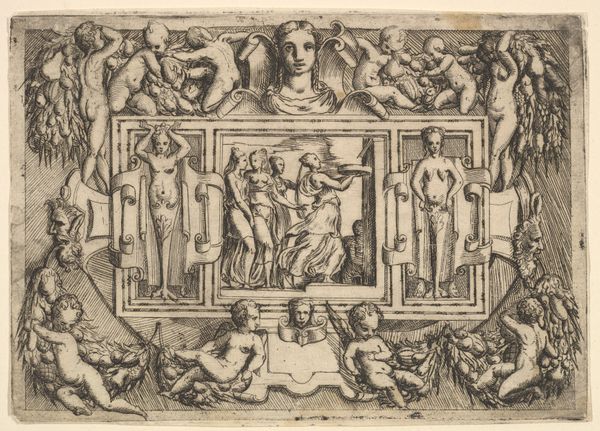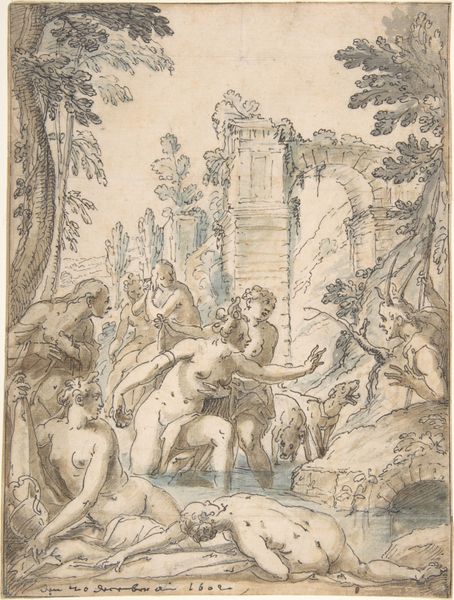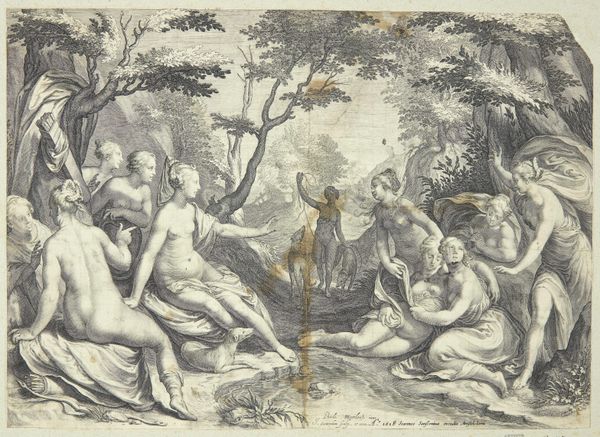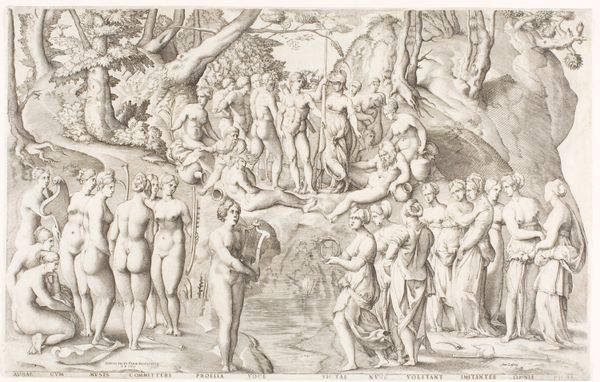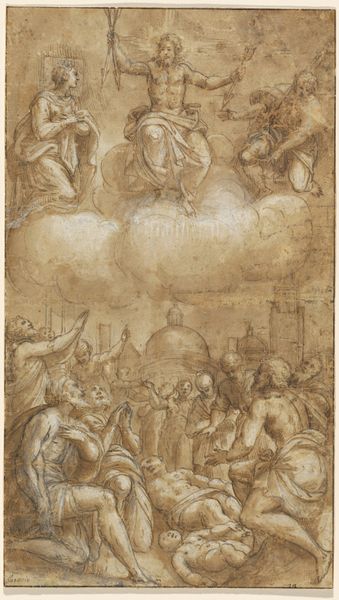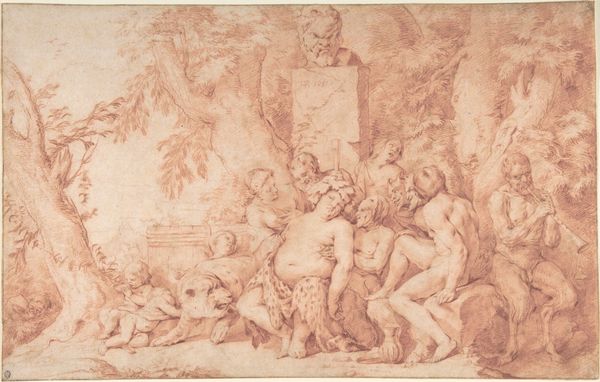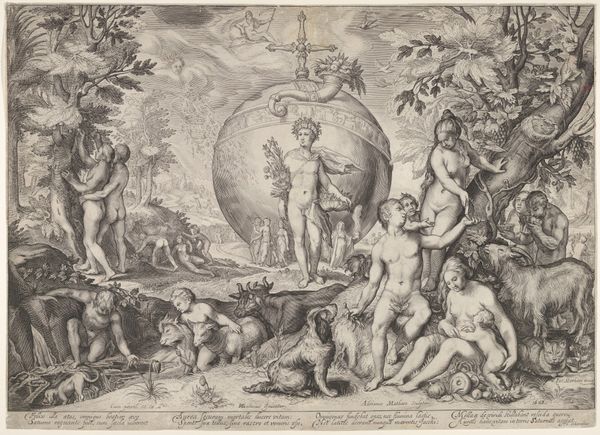
tempera, painting
#
portrait
#
high-renaissance
#
tempera
#
painting
#
figuration
#
oil painting
#
history-painting
#
italian-renaissance
#
miniature
Copyright: Public domain
Editor: Here we have Giulio Clovio's "Nativity and Adam and Eve" from 1546, painted in tempera. The symmetry is so striking! How do you approach this piece, particularly considering Clovio’s choices in material? Curator: The use of tempera is key here. Unlike oil, tempera dries incredibly quickly, demanding a meticulous and planned process. This speaks to the intense labor and skill invested. Also consider its small scale. For whom was such an object created and what does this indicate? Editor: That’s fascinating! Knowing it’s tempera shifts my perception completely; it seems like it required enormous patience. Given the biblical themes and obvious expense of this manuscript painting, who could even afford to produce such an elaborate item? Curator: Precisely. It speaks to the patronage system, where powerful individuals controlled artistic production and what type of visual expressions became available. What relationship might exist between the patron and the artist in terms of shared class? Or, indeed, tension, resulting from asymmetrical status? Editor: It really highlights the economic and social factors involved. It's easy to forget the material cost of even making art in the first place, something often overlooked when just looking at paintings as purely aesthetic objects.. Curator: Exactly! Considering Clovio's miniature, tempera, and subject, this was certainly meant to display more than the artists' vision; the patrons' world of power, skill and resources becomes visible. Editor: I will look at art in books differently going forward. I had never considered the economic relationship so intricately intertwined within these paintings. Curator: Exactly. These are material goods shaped by material conditions as well as visions.
Comments
No comments
Be the first to comment and join the conversation on the ultimate creative platform.


